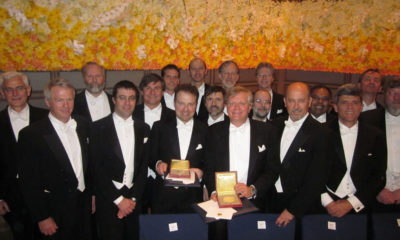Suntzeff Named Regents Professor of Observational Astronomy
COLLEGE STATION —
Dr. Nicholas B. Suntzeff, university distinguished professor of physics and astronomy at Texas A&M University, has been designated a Regents Professor for 2016-17 by The Texas A&M University System Board of Regents.
Suntzeff, an observational astronomer and a 2017 American Physical Society Fellow, is one of 12 A&M System faculty members who were nominated for the prestigious appointment, approved as part of the A&M System Board of Regents’ October meeting, held at Tarleton State University. Ten agency service, extension or research professionals within the A&M System also were recognized with the Regents Fellows Service Award.

Suntzeff at the May 2011 international meeting in Geneva of the U.N. International Strategy for Disaster Risk Reduction — one of the many events he attended during his yearlong stint as the United States representative to the United Nations’ Office for Disaster Risk Reduction and as Texas A&M’s first faculty member selected to the prestigious Jefferson Science Fellowship Program. (Credit: Nicholas B. Suntzeff.) 
Suntzeff, front and just-right-of-center (third from right) at the December 2011 Nobel Prize ceremony in Stockholm. He is pictured with the High-Z Supernova Search Team, which featured Nobel Prize co-recipients Brian Schmidt (left of Suntzeff) and Adam Riess (left of Schmidt). (Credit: Image courtesy of and copyrighted to Nicholas B. Suntzeff.)


